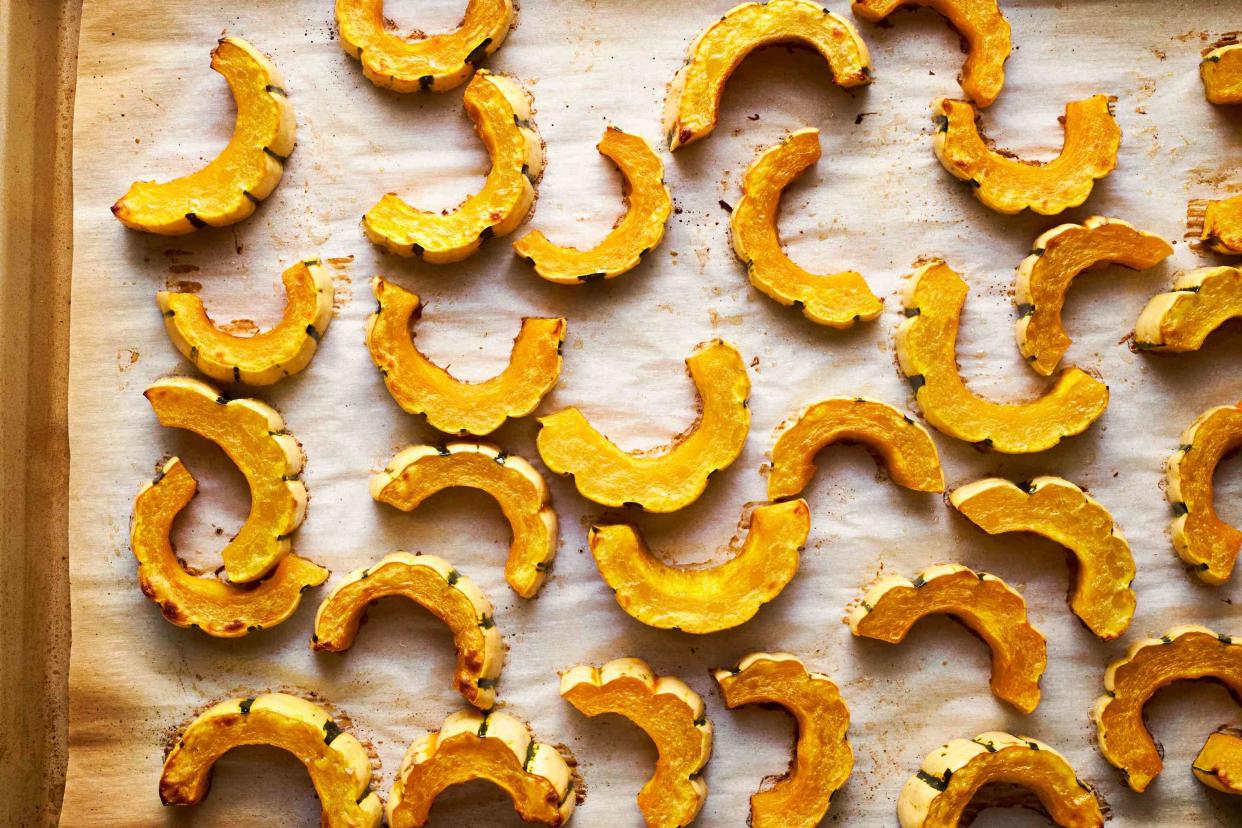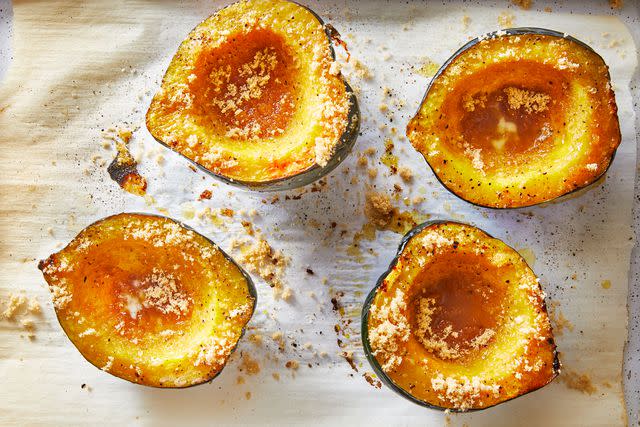Can You Eat The Skin Of Delicata Squash?

Delicata squash is one of many members of the squash family enjoyed in so many fall dishes. WIth a tender skin that caramelizes beautifully, Delicata squash is hearty and full of flavor. Enjoy it roasted with a brisket or turkey, or as a star ingredient in stuffing. Whether simply roasted or paired with sausage and fresh herbs, it’s sure to be colorful and satisfying.
Is The Delicata Squash Skin Edible?
Yes, absolutely. While some vegetables are meant to have their skin peeled before enjoying or cooking, that is not always true. “The skin of the delicata squash can be delicious, especially when you first steam or slow roast at a lower temperature to start off until the flesh of the squash becomes soft and tender, and then turn up the heat until the skin caramelizes and is charred crisp,” says chef Marcel Vigneron.
Meet The Experts
Marcel Vigneron is a James Beard-nominated chef and a runner-up on Top Chef.
Maya Feller, MS, RD, CDN of Brooklyn-based Maya Feller Nutrition is a registered dietitian, nutritionist, and author of Eating from Our Roots: 80+ Healthy Home-Cooked Favorites from Cultures Around the World.
How Should You Prepare Squash Skin?
Roasting is a great way to enjoy the skin. Vigneron’s favorite preparation is simply roasted, but with a little high temperature cooking oil such as avocado, peanut, or grapeseed, and some nice Celtic or pink salt. For acorn squash, he likes to finish off the roast with the addition of a touch of butter and brown sugar. “It's something my mother used to do and always reminds me of wintertime back home. I also like to take the roasted skins of some of the heartier varieties such as butternut and kabocha to make stocks for soups that can be used to thin out the squash,” said Vigneron.
And the skin is part of what makes it so delicious. “Delicata, acorn, and honeynut are some of my favorite squash skins to prepare because of their tender skin,” said Vigneron.

Caitlin Bensel; Food Styling: Torie Cox
Best Squash To Peel
“You can eat the skin of most squash. Ones that have a very tough exterior take a longer time to cook and may be hard to eat. If this is the case, peeling the squash is an option,” says Maya Feller, a registered dietitian, nutritionist, and author.
Butternut and kabocha tend to have a tougher skin with thicker fibers that can be less palatable. However, “It's not a total loss because you can still make stocks from the roasted squash skins. These stocks can be used to thin out the flesh of the squash in order to make a soup. I also still like to sneak some of the burnt peels into purees. It becomes like a seasoning similar to using a spice,” said Vigneron.

Caitlin Bensel, Food Stylist: Torie Cox
Favorite Types Of Squash Skin
It’s all about how you enjoy it. “If I had to choose, I personally like the flavor of acorn and kabocha the most. There is something magical that happens when you combine squash skin with a few spices and–voila–you are transcended to autumn,” adds Vigneron.
Related: 16 Butternut Squash Recipes You'll Want To Make This Fall
For more Southern Living news, make sure to sign up for our newsletter!
Read the original article on Southern Living.